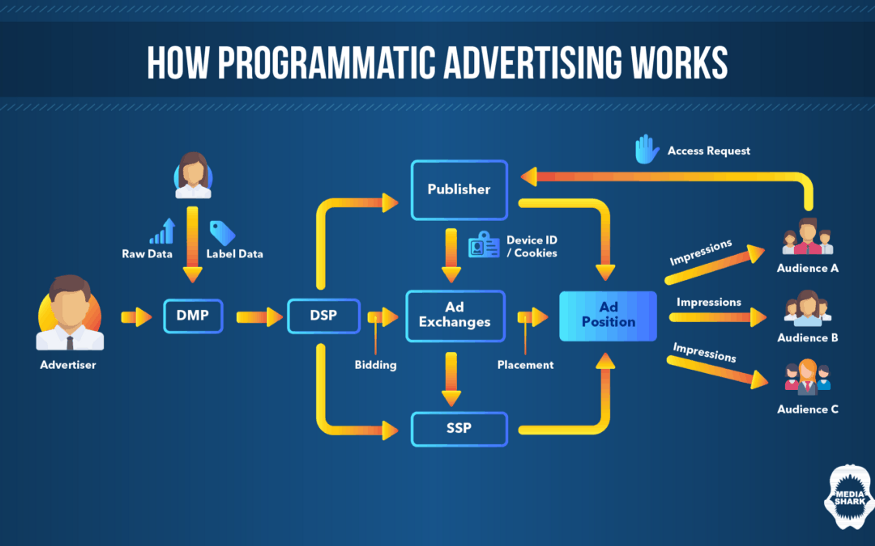This article will show you a step by step way to set up API with MediaMath. You may need to understand basic Python syntax to implement the method.
Programmatic marketing is nothing but a method for advertisers and media agencies who manage their budgets nowadays. It provides an efficient way for both parties to selling and buying their ads inventory in ad exchanges. On buy side, advertisers often need to make a time to time call based on the ROI estimation by their analytics team to pick up the best deal from the available ads inventory in exchange.
 In the end, buying ads to target right audiences.
In the end, buying ads to target right audiences.
With programmatic marketing platforms like MediaMath (MM), an ad exchange, Supply-Side Platforms (SSP), Demand-Side Platform (DSP) and Data Management Platform (DMP) are all offered in one place. Data Scientists can take advantage of API to work with a variety of data on DMP. Usual tasks may cover insight reporting and programmatic targeting. Often it’s a bit difficult to set up an API with a new platform in market because there is lack of well-documented software development tool kit (SDK) for open-source programming languages like Python. The following example may help to fill the gap by showing a step by step approach to set up a Python API with MediaMath.
Learn by Doing
- Step 1: Set up a Python 3.x environment
- Step 2: Set up your admin ads account on MM
- Step 3: Get Client ID and Client Secret from your account manager
- Step 4: Produce a campaign report that includes media spend, performance metrics, day, state, and region (DMA)
- Step 5: Clean up the data feed and push it to local database
- Step 6: Set up daily routine to run the script automatically at 8 am on server
- Step 7: There are a few steps towards the end of programmatic marketing journey
Except for Step 7, you can learn by doing with the source code I provided on my Github. There are a lot more to cover in #7 and I will continue to introduce how to build a predictive model (e.g. Lookalike Model), score prospective audiences and successfully target them on the MM in the next articles.
Check out the source code at Github repo. Originally published article at Medium.